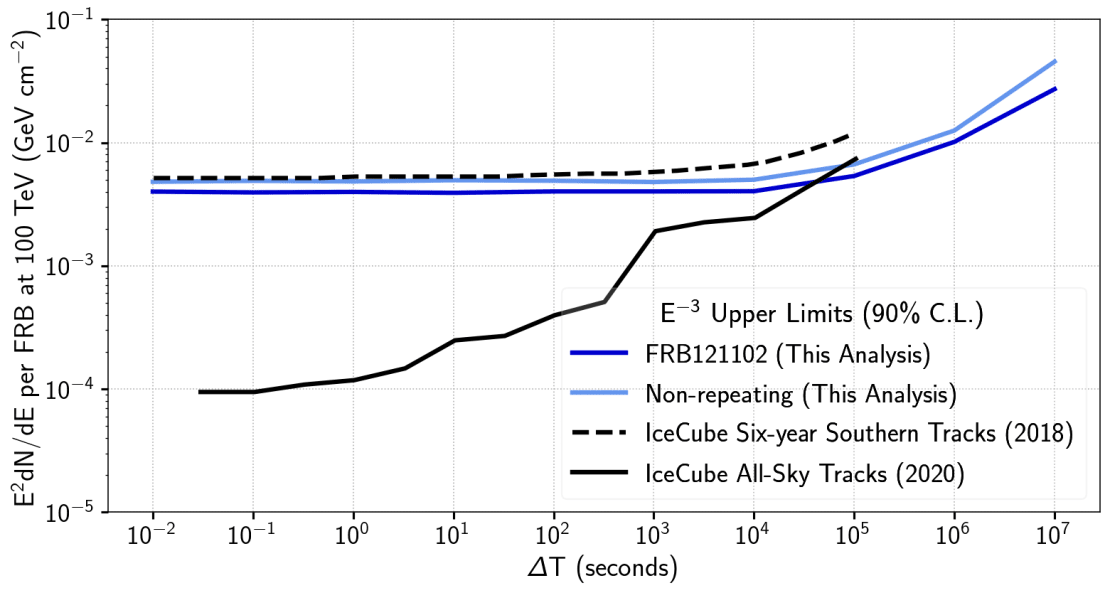The IceCube Neutrino Observatory, a one-of-a-kind detector operating at the Amundsen-Scott South Pole Station, searches for neutrinos—tiny, ghost-like particles that can travel extremely long distances unperturbed. Of particular interest to IceCube are astrophysical neutrinos, high-energy neutrinos originating from beyond our galaxy. Because they can travel straight distances, they can be traced back to their sources. However, the majority of these astrophysical sources remain to be identified.
In a recent study submitted to The Astrophysical Journal, the IceCube Collaboration searched for neutrino emission from a potential source of high-energy neutrinos called fast radio bursts (FRBs). Though they did not observe any significant neutrino emission from FRBs, the researchers set upper limits on such emission.

FRBs are intense bursts of radio waves that, although lasting for mere milliseconds, produce the same amount of energy as the sun over a three-day period. Since their discovery 15 years ago, scientists have been trying to understand these powerful bursts and to identify the astrophysical objects capable of producing FRBs. Interestingly, FRBs are known to either 1) repeatedly produce short radio bursts or 2) only produce a single burst, implying that different astrophysical objects could be generating these FRBs.
IceCube previously searched for neutrino emission from FRBs, but used datasets that contained track-like events, which refer to neutrino interactions in the ice that create straight trajectories. This time, the researchers utilized an independent dataset that contained roughly 2,000 cascade-like events—seen as spherical showers of light within the detector—collected over seven years.
They looked at two different catalogs of FRBs; these were essentially the same as the ones observed in IceCube’s previous analyses. The first catalog of FRBs consisted of 22 FRBs that did not repeat while the second catalog included one FRB that repeated 26 times during the period IceCube collected data. Then, they searched for neutrino emission using different time scales after the FRB had occurred.
“Although we did not observe any statistically significant neutrino emission from FRBs, we did find that our limits are comparable to IceCube’s previous results,” said Mike Kovacevich, a physics PhD student at Drexel University and one of the study leads. “This is exciting because it shows that we can use both tracks and cascades in future FRB analyses without losing any sensitivity.”
With more experiments turning their attention to FRBs, the FRB catalogs will continue to grow. Kovacevich is confident that the larger sample size will enable IceCube to perform more sensitive searches in the future.
+ info “A Search for Coincident Neutrino Emission from Fast Radio Bursts with Seven Years of IceCube Cascade Events,” IceCube Collaboration: R. Abbasi et al., The Astrophysical Journal 946 (2023) 2, 80, iopscience.iop.org, arXiv